| A882 |
Navicixizumab
Featured
|
Navicixizumab (OMP-305B83) is a bispecific anti-VEGF and anti-DLL4 inhibitory antibody. Navicixizumab can combine with Paclitaxel.html" class="link-product" target="_blank"> Paclitaxel (HY-B0015) for cancer research. Navicixizumab can be used in the research of ovarian, primary peritoneal, or fallopian tube cancer. |

|
| A883 |
Enoticumab
Featured
|
Enoticumab (REGN421, SAR153192) is an IgG1κ antibody targeting human Dll4. DLL4 is a ligand of the Notch signaling pathway and regulates fatty acid uptake through non-transcriptional regulation of macropinocytosis-dependent long-chain fatty acid uptake. Specific in vivo activity of Enoticumab in an ovarian xenograft model. EGN421 (2.5 mg/kg once weekly) resulted in 86% and 83% tumor growth inhibition in mouse subcutaneous TOV-112D or intraperitoneal A2780 human tumor xenograft models, respectively. |
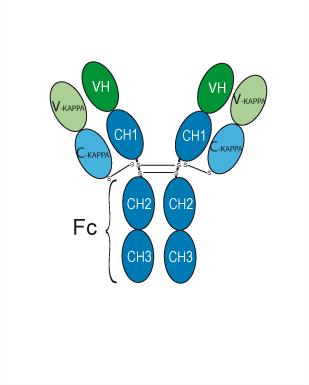
|
| A884 |
Smart Targeting patent anti-DLL4
Featured
|
|

|
| A885 |
Forerunner patent anti-DSG3
Featured
|
|

|
| A886 |
Centrose patent anti-dysadherin
Featured
|
|

|
| A887 |
PF-06647263
Featured
|
PF-06647263 is an ADC targeting EFNA4, consisting of EFNA4 Antibody, ADC toxin Calicheamicin (HY-19609) and a linker. PF-06647263 exhibits anti-tumor activity and induces significant tumor regression in TNBC xenografts. |

|
| A888 |
Parsatuzumab
Featured
|
Parsatuzumab (Anti-EGFL7; RG 7414) is a humanized monoclonal antibody, acts as an immunomodulator and binds to EGFL7. Parsatuzumab selectively blocks the interaction between EGFL7 and endothelial cells, potentially inhibiting vascular regrowth and reducing vascular endothelial growth factor (VEGF) inhibition. |
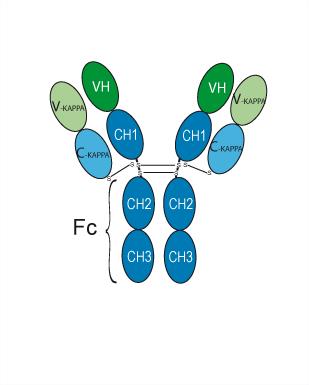
|
| A889 |
Centocor patent anti-CD147
Featured
|
|

|
| A890 |
Ags-16C3F
Featured
|
|

|
| A891 |
TTX-030(Eltivutabart)
Featured
|
|
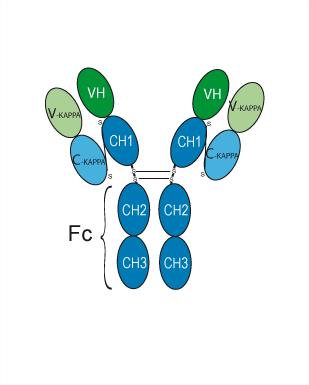
|
| A892 |
Oportuzumab
Featured
|
|

|
| A893 |
Adecatumumab
Featured
|
Adecatumumab (Anti-Human EPCAM Recombinant Antibody; MT201) is a full human monoclonal antibody of the IgG1 isotype, targeting human EpCAM. Adecatumumab is expressed in almost all adenocarcinomas, and its activity is not dependent of K-Ras status. |

|
| A894 |
Ifabotuzumab
Featured
|
|

|
| A895 |
Genentech patent anti-EphB2
Featured
|
|

|
| A896 |
Morphosys patent anti-EphB4
Featured
|
|

|
| A897 |
VasGene patent anti-EphB4
Featured
|
|

|
| A898 |
Abbott patent anti-EPO Receptor
Featured
|
|

|
| A899 |
Demupitamab
Featured
|
|

|
| A900 |
Serclutamab
Featured
|
Serclutamab is a humanized chimeric antibody targeting EGFR IgG1-κ. Mainly expressed by CHO (Chinese Hamster Ovary) cells. |
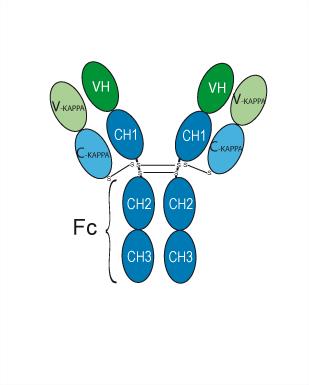
|
| A901 |
Losatuxizumab
Featured
|
Losatuxizumab (ABT-806) is an anti-EGFR monoclonal antibody. Losatuxizumab binds to EGFR with EC50s of 0.96 nM for EGFR wild-type, 0.09 nM for EGFRC271A,C283A, 0.12 nM for EGFRvIII, 0.66 nM for EGFR1-501. Losatuxizumab can be used for research of EGFR-expressing cancers. |
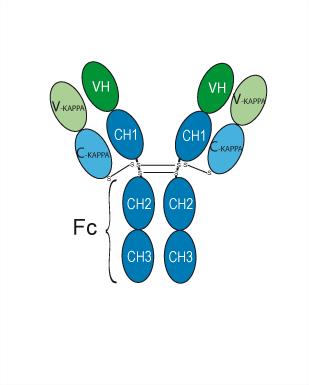
|
| DC67210 |
FK960
Featured
|
FK960 is a potential anti-dementia agent that reverses the reduction in cerebral blood flow (rCBF) caused by sensory stimulation by enhancing cholinergic neurotransmission. In macaque experiments, physostigmine (AChE inhibitor; HY-N6608) was able to completely eliminate the rCBF in the sensory cortex increased by vibrotactile stimulation. FK960 (1-1000 μg/kg) can restore the eliminated rCBF response, and the action time can last for 1 hour. However, FK960 cannot restore the rCBF response eliminated by HA-966 (NMDA modulator; HY-100822), indicating that its function is not dependent on non-glutamatergic neurotransmission. |
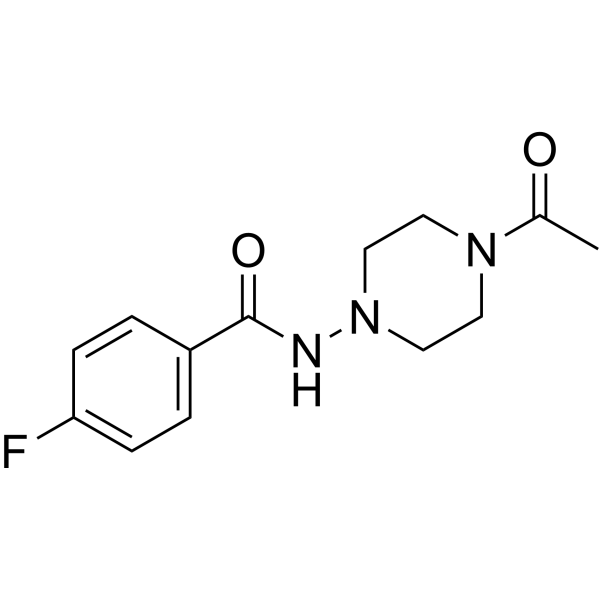
|
| DC67211 |
m7GpppAmpG Na salt
Featured
|
m7GpppAmpG Na salt is a trinucleotide 5′ cap analog with the capping efficiencies for the obtained RNAs of 90%. |
.gif)
|
| A903 |
Depatuxizumab
Featured
|
Depatuxizumab is a brain-penetrant and humanized tumor-specific anti EGFR monoclonal antibody. Depatuxizumab inhibits the growth of xenograft models of mutant EGFRvIII and wild-type EGFR. Depatuxizumab can be used for research on cancer. |
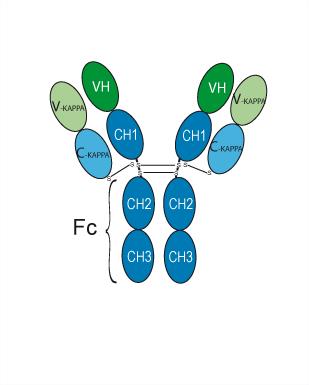
|
| A904 |
Nimotuzumab
Featured
|
Nimotuzumab is a humanized IgG1 monoclonal antibody targeting EGFR with a KD of 0.21 nM. Nimotuzumab is directed against the extracellular domain of the EGFR blocking the binding to its ligands. Nimotuzumab, a strong antitumor agent, is cytolytic on target tumors by its capacity to cause antibody dependent cell mediated cytotoxicity (ADCC) and complement dependent cytotoxicity (CDC). |
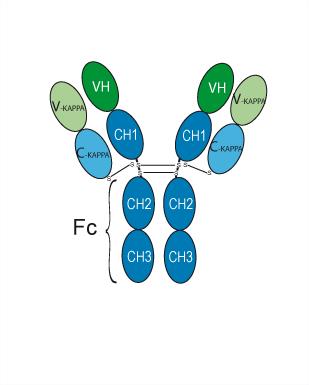
|
| A905 |
Laprituximab
Featured
|
Laprituximab (J2898A) is a humanized IgG1 anti-EGFR antibody that can be used for the synthesis of ADC IMGN289. |
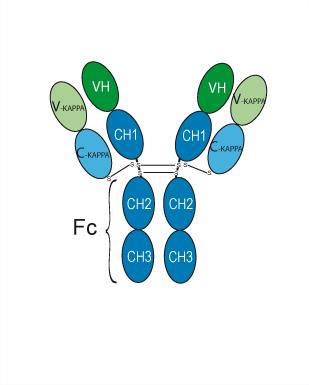
|
| A906 |
Zalutumumab
Featured
|
Zalutumumab is a high affinity, completely human IgG1 monoclonal antibody targeting EGFR. Zalutumumab binds to domain III of the EGF receptor and acts by blocking the binding of EGF and by sterically interfering with the active conformation of the receptor. Zalutumumab binds with IgG and its Fab fragment with EC50s of 7 and 19 nM, respectively. Zalutumumab can be used for the research of cancer. |

|
| A907 |
Tomuzotuximab
Featured
|
Tomuzotuximab (Anti-Human EGFR Recombinant Antibody) is a fully human glycoengineered IgG1 monoclonal antibody against EGFR. Tomuzotuximab has anticancer effects. |

|
| A908 |
Imgatuzumab
Featured
|
Imgatuzumab (RG 7160) is a humanized monoclonal antibody against the EGFR. Imgatuzumab acts as an immunomodulator. Imgatuzumab can be used in research of cancer. |

|
| A909 |
Modotuximab
Featured
|
Modotuximab (DS 1024) is an IgG1κ-type chimeric antibody targeting human EGFR protein. Modotuximab binds non-overlapping epitopes on domain III of EGFR, a domain that is intact in EGFRvIII. Modotuximab has antitumor activity in vivo. |

|
| A910 |
Matuzumab
Featured
|
Matuzumab (EMD 72000) is a humanized anti-EGFR monoclonal antibody that blocks EGFR activation and downstream signaling, inhibits tumor growth. |
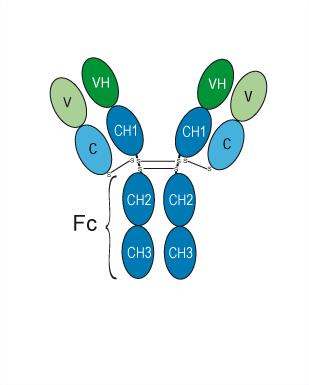
|





















.gif)







